
Mulu National Park: The Heart of Borneo's Wilderness
Explore Mulu National Park, a UNESCO World Heritage site in Malaysian Borneo, known for its stunning caves, diverse ecosystems, and breathtaking landscapes.
Mulu National Park, located in Malaysian Borneo, is a treasure trove of natural wonders and a paradise for adventure seekers. It is home to some of the world's most remarkable caves, including the Sarawak Chamber, the largest known underground chamber, and the Deer Cave, which houses millions of bats. The park's diverse ecosystems, from lush rainforests to limestone karst formations, offer a unique experience for nature lovers. Visitors can explore the park's extensive network of trails, which wind through dense jungle and lead to stunning viewpoints. One of the highlights is the Pinnacles Trail, which takes you to the top of razor-sharp limestone formations. For those looking for a less strenuous activity, a boat ride along the Melinau River offers a serene way to take in the park's beauty. Mulu National Park is also a UNESCO World Heritage site, recognized for its outstanding universal value. Its rich biodiversity includes a wide variety of flora and fauna, some of which are endemic to the region. Whether you're an avid hiker, a spelunker, or simply someone who appreciates natural beauty, Mulu National Park has something to offer.
Local tips in Mulu National Park
- Bring sturdy hiking boots for the park's trails, as the terrain can be challenging.
- Pack insect repellent to protect yourself from mosquitoes and other insects.
- Book guided tours in advance, especially during peak season, to ensure availability.
- Carry a waterproof bag to protect your belongings during boat rides and rainy weather.
- Stay hydrated and bring enough water, as the tropical climate can be quite humid.
Mulu National Park: The Heart of Borneo's Wilderness
Mulu National Park, located in Malaysian Borneo, is a treasure trove of natural wonders and a paradise for adventure seekers. It is home to some of the world's most remarkable caves, including the Sarawak Chamber, the largest known underground chamber, and the Deer Cave, which houses millions of bats. The park's diverse ecosystems, from lush rainforests to limestone karst formations, offer a unique experience for nature lovers. Visitors can explore the park's extensive network of trails, which wind through dense jungle and lead to stunning viewpoints. One of the highlights is the Pinnacles Trail, which takes you to the top of razor-sharp limestone formations. For those looking for a less strenuous activity, a boat ride along the Melinau River offers a serene way to take in the park's beauty. Mulu National Park is also a UNESCO World Heritage site, recognized for its outstanding universal value. Its rich biodiversity includes a wide variety of flora and fauna, some of which are endemic to the region. Whether you're an avid hiker, a spelunker, or simply someone who appreciates natural beauty, Mulu National Park has something to offer.
When is the best time to go to Mulu National Park?
Iconic landmarks you can’t miss
Gunung Mulu National Park
Explore the breathtaking landscapes and unique biodiversity of Gunung Mulu National Park, a UNESCO World Heritage Site in Sarawak, Malaysia.

Mulu National Park Entrance
Explore the breathtaking beauty of Mulu National Park, a UNESCO World Heritage Site known for its stunning limestone caves and rich biodiversity.

Deer Cave
Experience the breathtaking beauty of Deer Cave in Gunung Mulu National Park, a UNESCO World Heritage site and a true natural wonder in Sarawak, Malaysia.

Mount Mulu
Explore the breathtaking Mount Mulu, a UNESCO World Heritage site in Sarawak, Malaysia, known for its stunning peaks and incredible biodiversity.
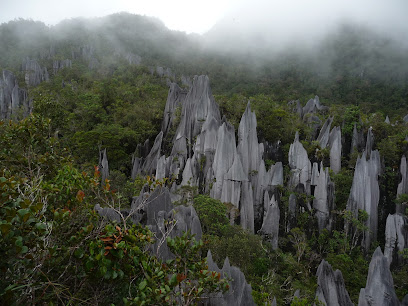
Lang Cave
Explore Lang Cave in Gunung Mulu National Park, a breathtaking natural wonder with stunning limestone formations and rich biodiversity.

Paku Waterfall
Explore the breathtaking beauty of Paku Waterfall, a serene nature preserve in Sarawak, Malaysia, perfect for adventure and relaxation.

Mulu Tree Top Tower
Experience breathtaking views and rich biodiversity at Mulu Tree Top Tower, Sarawak's premier observation deck in the heart of Borneo's rainforest.

Ruang Sarawak
Discover the breathtaking beauty of Ruang Sarawak, a hidden cave gem in Malaysia, rich in natural wonders and cultural heritage.

Fast Lane Cave
Discover the breathtaking beauty of Fast Lane Cave in Sarawak, Malaysia, a must-visit destination for adventure seekers and nature enthusiasts.

Unmissable attractions to see
Gunung Mulu National Park
Explore the breathtaking caves, diverse wildlife, and stunning landscapes of Gunung Mulu National Park, a UNESCO World Heritage Site in Sarawak, Malaysia.

Gua Niah (Niah Caves) Entrance, Niah, Sarawak.
Discover the ancient wonders of Niah Caves in Sarawak, a UNESCO World Heritage site rich in history and biodiversity, perfect for adventurous travelers.
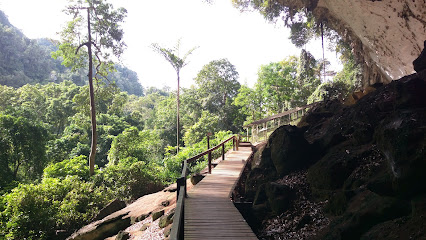
Niah National Park
Explore Niah National Park in Sarawak, Malaysia – a captivating blend of ancient caves, rich biodiversity, and breathtaking landscapes for every explorer.

Taman Negara Bukit Lambir
Discover the breathtaking beauty of Taman Negara Bukit Lambir, a national park in Sarawak, rich in biodiversity and stunning landscapes.

Wind Caves
Explore the Wind Caves of Bau – a breathtaking blend of limestone formations, adventure, and nature in Sarawak.

Batang Ai National Park
Explore the lush landscapes and diverse wildlife of Batang Ai National Park, a hidden gem in Sarawak's breathtaking rainforest.

Mulu National Park Entrance
Explore Mulu National Park: A UNESCO World Heritage Site with stunning caves, rich biodiversity, and adventure in the heart of Sarawak, Malaysia.
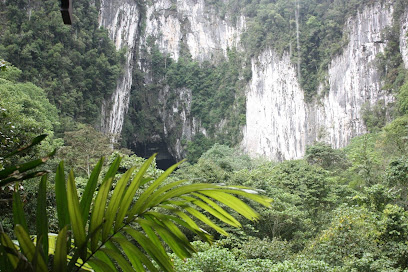
Deer Cave
Discover the awe-inspiring Deer Cave in Mulu National Park, a UNESCO World Heritage site showcasing stunning limestone formations and vibrant ecosystems.
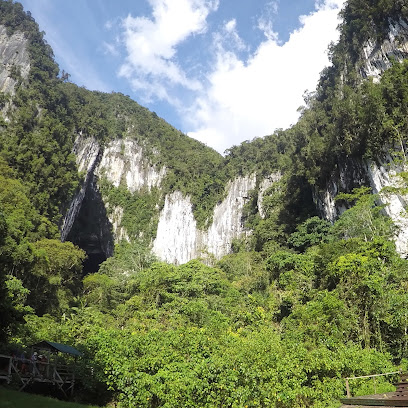
Clearwater Cave (Gua Air Jernih)
Discover the breathtaking Clearwater Cave in Sarawak, where crystal-clear waters and stunning limestone formations await your exploration.
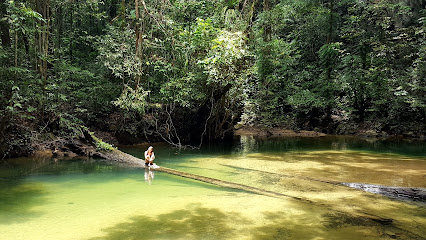
Camp 5, Mulu National Park
Discover the wonders of nature at Camp 5, Mulu National Park - a gateway to adventure in Sarawak's pristine wilderness.
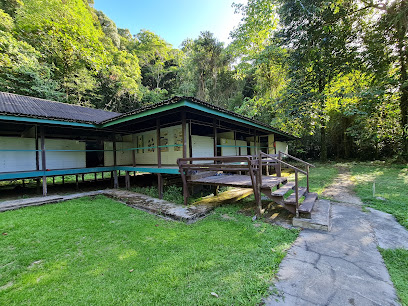
Pinnacles
Explore the majestic Pinnacles of Gunung Mulu National Park, a UNESCO World Heritage Site, featuring breathtaking limestone formations and rich biodiversity.
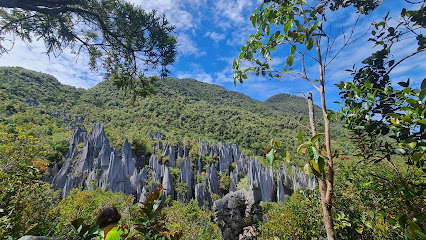
Lang Cave
Discover Lang Cave in Gunung Mulu National Park: a stunning natural preserve filled with remarkable stalactite and stalagmite formations in Malaysia.
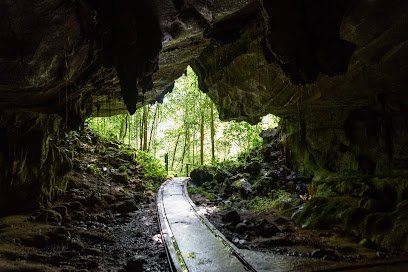
Paku Waterfall
Experience the beauty of Paku Waterfall in Sarawak, a serene nature preserve perfect for hiking and relaxation amidst stunning landscapes.
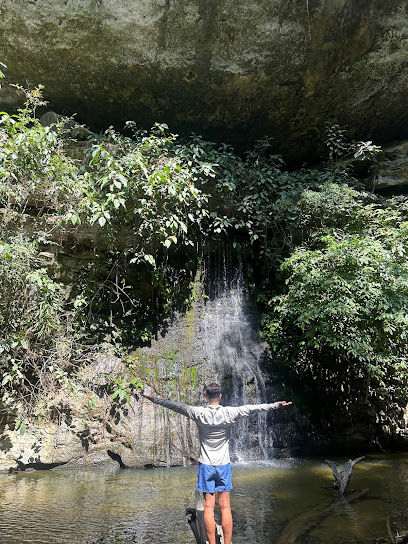
Mulu Tree Top Tower
Discover breathtaking views and vibrant ecosystems at Mulu Tree Top Tower in Sarawak, a must-visit observation deck in Mulu National Park.
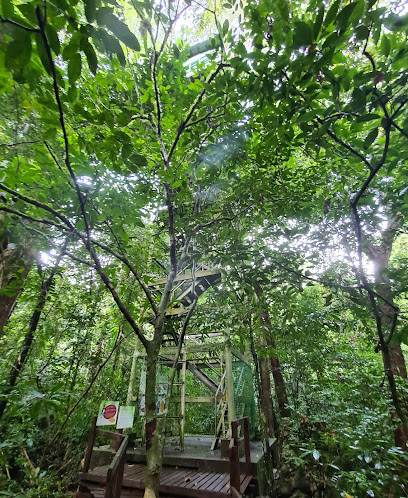
Santubong Embang Waterfall
Explore the breathtaking beauty of Santubong Embang Waterfall in Sarawak, a hidden gem perfect for nature lovers and adventure seekers alike.
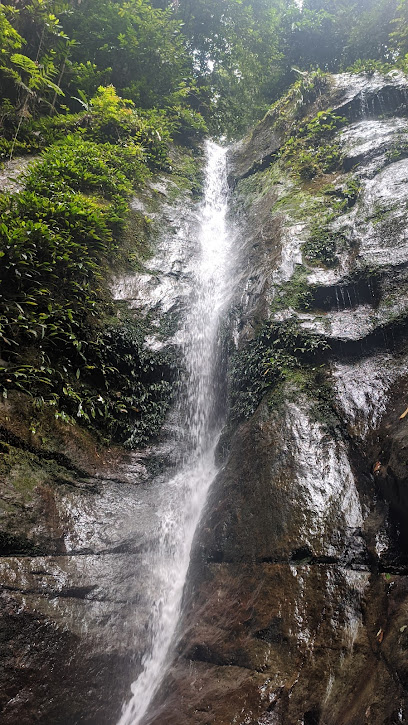
Essential places to dine
Mulu Marriott Resort & Spa
Experience unparalleled luxury and natural beauty at Mulu Marriott Resort & Spa, your gateway to adventure in Sarawak's stunning landscapes.

Borneo Cultures Museum Restaurant
Experience authentic Sarawakian cuisine at Borneo Cultures Museum Restaurant in Kuching - where culture meets culinary excellence.

Mulu Village
Experience authentic Malaysian hospitality at Mulu Village while exploring breathtaking natural landscapes and UNESCO World Heritage sites.

Stella Mulu Cafe
Discover Stella Mulu Cafe in Sarawak - where exquisite coffee meets warm hospitality in a cozy setting.

Good Luck Cave'fe Mulu
Savor authentic Malaysian flavors at Good Luck Cave'fe Mulu while surrounded by nature's beauty in Marudi, Sarawak.
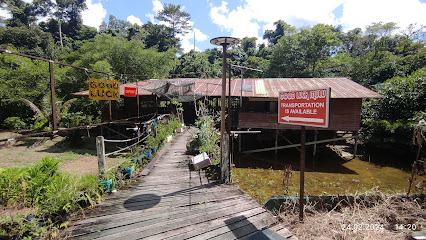
AA Homestay Mulu
Discover tranquility at AA Homestay Mulu, your gateway to exploring the wonders of Mulu National Park.
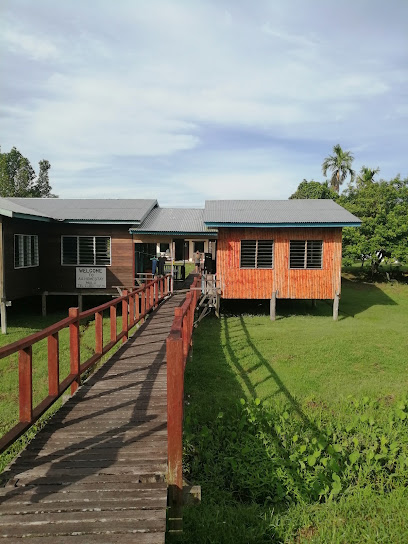
Bamboo Cafe
Experience the essence of Sarawak at Bamboo Cafe, where delicious cuisine meets tranquil ambiance amidst nature's beauty.
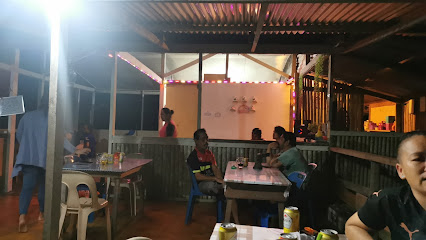
Markets, malls and hidden boutiques
Gunung Mulu National Park
Discover the breathtaking beauty and rich biodiversity of Gunung Mulu National Park, a UNESCO World Heritage site in Sarawak, Malaysia.

Mulu Marriott Resort & Spa
Experience luxury and nature at Mulu Marriott Resort & Spa, your gateway to adventure in the breathtaking Mulu National Park.

Mulu Diana Homestay
Discover the serenity and charm of Mulu Diana Homestay, your gateway to the wonders of Gunung Mulu National Park in Sarawak.
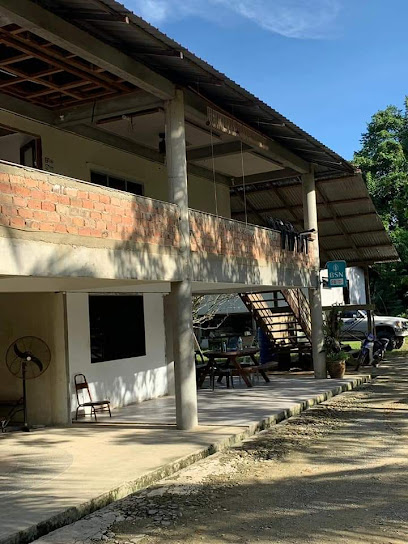
Mulu National Park Entrance
Explore the breathtaking biodiversity of Mulu National Park, a UNESCO World Heritage Site in Malaysia known for its stunning limestone formations and rich ecosystems.

Deer Cave
Experience the awe-inspiring Deer Cave, a natural wonder in Gunung Mulu National Park, home to stunning limestone formations and a vibrant ecosystem.

MK Mini Market
Explore the flavors of Limbang at MK Mini Market, your go-to grocery store for local produce and essentials in Sarawak.
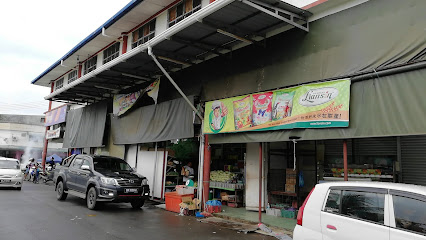
Clearwater Cave (Gua Air Jernih)
Discover the crystal-clear waters and stunning limestone formations of Clearwater Cave, a must-visit natural wonder in Sarawak, Malaysia.

Mount Mulu
Discover the enchanting beauty of Mount Mulu, a UNESCO World Heritage site in Sarawak, renowned for its majestic peak, vast caves, and rich biodiversity.

Choon Cheong Department Store (Limbang) Sdn Bhd - Branch
Explore the vibrant local culture and flavors at Choon Cheong Department Store in Limbang, Sarawak - a shopper's delight!
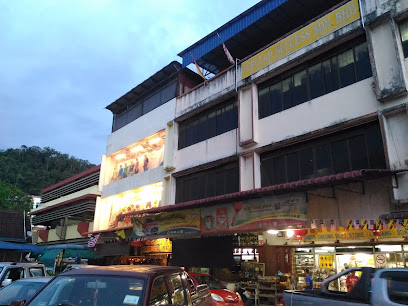
MR.DIY
Explore MR.DIY in Baram for all your home improvement and DIY needs, featuring an extensive selection of tools, supplies, and decorative items.
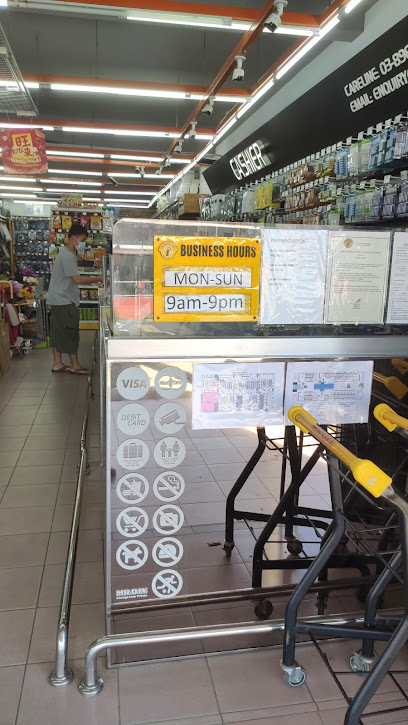
SW ENTERPRISE 升旺五金企业
Explore SW ENTERPRISE in Marudi: A unique blend of hardware, Asian groceries, and department store essentials for every traveler.
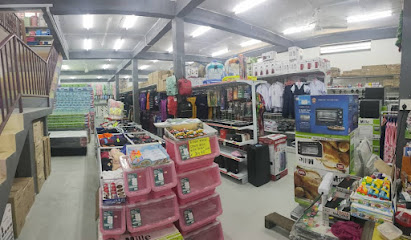
Mulu Village
Explore Mulu Village: Your Gateway to Nature's Wonders and Authentic Malaysian Culture in Sarawak.

Stella Mulu Cafe
Discover the charm of Stella Mulu Cafe in Sarawak, where every cup of coffee reflects the rich flavors of Malaysian culture.
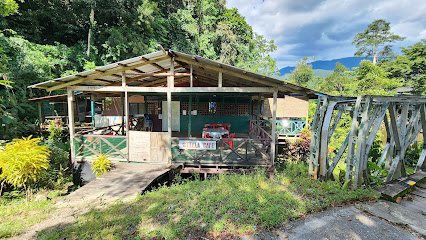
Lang Cave
Explore the breathtaking Lang Cave in Gunung Mulu National Park, a UNESCO World Heritage site showcasing stunning limestone formations and diverse ecosystems.

Long Wat Apoh
Explore Long Wat Apoh: A charming homewares store in Sarawak showcasing unique local crafts and artisanal goods.
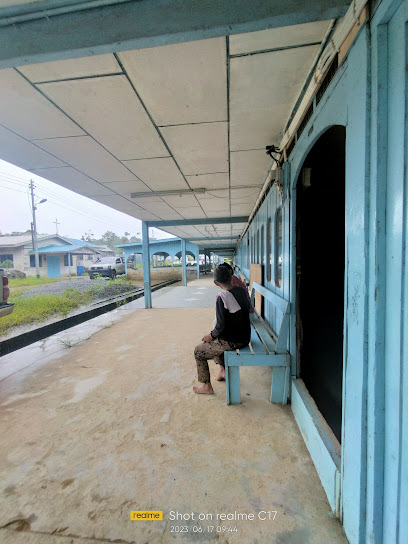
Essential bars & hidden hideouts
Bako National Park
Discover the breathtaking landscapes and unique wildlife of Bako National Park, a premier destination in Sarawak, Malaysia for nature lovers and adventure seekers.

Gunung Mulu National Park
Discover the breathtaking beauty and unique biodiversity of Gunung Mulu National Park, a UNESCO World Heritage site in the heart of Malaysian Borneo.

My Village Barok
Savor the essence of Malaysian cuisine at My Village Barok, where authentic flavors and warm hospitality await in Kampung Boyan.

Niah National Park
Discover the enchanting beauty of Niah National Park, where limestone caves meet lush rainforests and rich cultural heritage awaits.

Taman Negara Bukit Lambir
Discover the enchanting beauty of Taman Negara Bukit Lambir, a national park in Sarawak, Malaysia, ideal for nature lovers and adventure seekers.

Mulu Marriott Resort & Spa
Discover the ultimate luxury experience amidst the breathtaking beauty of Mulu National Park at Mulu Marriott Resort & Spa.

Zinc Restaurant & Bar
Experience culinary excellence at Zinc Restaurant & Bar in Kuching, where Western cuisine meets innovative cocktails in a vibrant atmosphere.

Wind Caves
Explore the breathtaking Wind Caves of Bau, Sarawak – a natural wonder perfect for adventure and relaxation.

Mulu Diana Homestay
Discover the wonders of Mulu National Park while enjoying the comfort and warmth of Mulu Diana Homestay, your gateway to nature's paradise.

James Brooke Bistro & Cafe
Experience the local flavors of Sarawak at James Brooke Bistro & Cafe, where every meal is a delightful culinary journey by the waterfront.

Drunk Monkey Old Street Bar
Discover the energy of Kuching's nightlife at Drunk Monkey Old Street Bar, where refreshing drinks and vibrant atmosphere await.

Borneo Redneck's Bar
Discover the lively nightlife at Borneo Redneck's Bar in Kuching, a perfect blend of local culture and vibrant atmosphere.
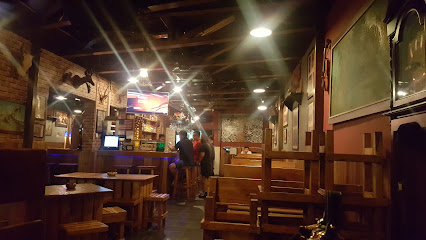
Monkee Bar Bistro
Discover the energetic vibe of Monkee Bar Bistro in Kuching, where unique cocktails and live music create unforgettable nights.
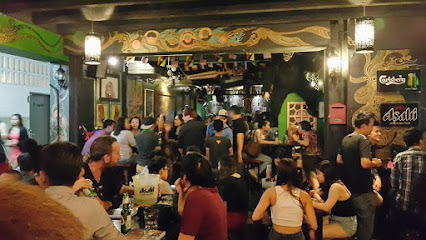
Planet Amore Restaurant [Non-Halal]
Discover a culinary haven at Planet Amore Restaurant in Kuching, offering exquisite Western cuisine in a cozy mall setting.
![Planet Amore Restaurant [Non-Halal]](https://evendo-location-media.s3.amazonaws.com/BarImages/ff87e08d-b25b-4fd9-b72f-d6405d8dc03f)
Deer Cave
Explore the magnificent Deer Cave in Gunung Mulu National Park, a UNESCO World Heritage Site known for its stunning formations and vibrant bat population.

Local Phrases about Mulu National Park
-
- HelloSelamat pagi
[suh-lah-maht pah-ghee] - GoodbyeSelamat tinggal
[suh-lah-maht ting-gahl] - YesYa
[yah] - NoTidak
[tee-dahk] - Please/You're welcomeSila
[see-lah] - Thank youTerima kasih
[tuh-ree-mah kah-see] - Excuse me/SorryMaaf
[mah-ahf] - How are you?Apa khabar?
[ah-pah kah-bahr] - Fine. And you?Baik. Dan awak?
[bye-ee-k. dahn ah-wahk] - Do you speak English?Boleh cakap Bahasa Inggeris?
[boh-leh chah-kahp bah-hah-sah eeng-ger-ees] - I don't understandSaya tidak faham
[sah-yah tee-dahk fah-hahm]
- HelloSelamat pagi
-
- I'd like to see the menu, pleaseBoleh saya lihat menu, sila
[boh-leh sah-yah lee-haht meh-noo, see-lah] - I don't eat meatSaya tidak makan daging
[sah-yah tee-dahk mah-kahn dah-yihng] - Cheers!Sihat!
[see-haht] - I would like to pay, pleaseSaya hendak bayar, sila
[sah-yah hehn-dahk bah-yahr, see-lah]
- I'd like to see the menu, pleaseBoleh saya lihat menu, sila
-
- Help!Tolong!
[toh-lohng] - Go away!Pergi jauh-jauh!
[pehr-gee jow-jow] - Call the Police!Panggil polis!
[pahng-geel poh-lees] - Call a doctor!Panggil doktor!
[pahng-geel dohk-tor] - I'm lostSaya sesat
[sah-yah suh-saht] - I'm illSaya sakit
[sah-yah sah-keet]
- Help!Tolong!
-
- I'd like to buy...Saya hendak membeli...
[sah-yah hehn-dahk mehm-beh-lee] - I'm just lookingSaya hanya tengok-tengok
[sah-yah hyahn-yah tehn-gohk-tehn-gohk] - How much is it?Berapa harganya?
[buh-rah-pah hahr-gahn-yah] - That's too expensiveItu terlalu mahal
[ee-too tuhr-lah-loo mah-hahl] - Can you lower the price?Boleh kurangkan harga?
[boh-leh koo-rahn-gahn hahr-gah]
- I'd like to buy...Saya hendak membeli...
-
- What time is it?Pukul berapa sekarang?
[poo-kool buh-rah-pah suh-kah-rahn] - It's one o'clockPukul satu
[poo-kool sah-too] - Half past (10)Pukul setengah (sepuluh)
[poo-kool suh-tuh-ngah (suh-poo-loo)] - MorningPagi
[pah-ghee] - AfternoonPetang
[puh-tahng] - EveningMalam
[mah-lahm] - YesterdaySemalam
[suh-mah-lahm] - TodayHari ini
[hah-ree ee-nee] - TomorrowEsok
[eh-sohk] - 1Satu
[sah-too] - 2Dua
[doo-ah] - 3Tiga
[tee-gah] - 4Empat
[em-paht] - 5Lima
[lee-mah] - 6Enam
[eh-nahm] - 7Tujuh
[too-joo] - 8Lapan
[lah-pahn] - 9Sembilan
[suhm-bee-lahn] - 10Sepuluh
[suh-poo-loo]
- What time is it?Pukul berapa sekarang?
-
- Where's a/the...?Di mana...
[dee mah-nah] - What's the address?Apa alamatnya?
[ah-pah ah-lah-maht-nyah] - Can you show me (on the map)?Boleh tunjukkan pada saya (di peta)?
[boh-leh toon-jook-kahn pah-dah sah-yah (dee peh-tah)] - When's the next (bus)?Bila bas seterusnya?
[bee-lah bahs suh-teh-roos-n-yah] - A ticket (to ....)Satu tiket (ke ....)
[sah-too tee-keht (keh ....)]
- Where's a/the...?Di mana...
History of Mulu National Park
-
Mulu National Park is renowned for its extensive cave systems, which began forming over 5 million years ago. The caves were created by the dissolution of limestone by acidic rainwater, leading to the spectacular formations we see today. The park’s most famous cave, the Sarawak Chamber, is one of the largest known cave chambers in the world.
-
In 1977, the Royal Geographical Society (RGS) embarked on a major expedition to explore the caves of Mulu. This expedition, known as the Mulu 1978 Expedition, brought international attention to the park and uncovered numerous caves, including the Clearwater Cave and the Deer Cave. The expedition’s findings were instrumental in the designation of Mulu as a national park.
-
The Penan and Berawan people have lived in the Mulu area for centuries. These indigenous communities have a rich cultural heritage and deep knowledge of the local environment. Their traditional practices, such as hunting, gathering, and shifting cultivation, are integral to the region's history. The Penan, in particular, are known for their nomadic lifestyle and their profound understanding of the rainforest.
-
In 2000, Mulu National Park was designated as a UNESCO World Heritage Site for its outstanding universal value. The park was recognized for its exceptional natural beauty, its geological significance, and its biodiversity. The designation has helped to protect the park's unique ecosystems and promote sustainable tourism in the region.
-
Since the late 20th century, Mulu National Park has become a key destination for eco-tourism. The park offers a range of activities, from guided tours of its caves to treks through its pristine rainforest. Eco-tourism has played a crucial role in supporting the local economy and funding conservation efforts. The park’s management has focused on minimizing the impact of tourism on the environment while providing educational and immersive experiences for visitors.
-
Ongoing research and conservation efforts are central to the management of Mulu National Park. Scientists from around the world continue to study the park’s unique flora and fauna, as well as its geological formations. Conservation programs aim to preserve the park's biodiversity and protect endangered species. Collaborative efforts with indigenous communities are also crucial in ensuring the sustainable use of the park’s resources.
Mulu National Park Essentials
-
Mulu National Park is located in the Malaysian state of Sarawak on the island of Borneo. The nearest airport is Mulu Airport (MZV), which has flights connecting from Miri, Kuching, and Kota Kinabalu. From Miri, the flight takes about 30 minutes. Alternatively, you can take a riverboat from Marudi to Mulu, though this journey is longer and less commonly used.
-
Once in Mulu National Park, transportation is primarily on foot or by boat, as the park's terrain is rugged and most areas are only accessible via jungle trails or rivers. The park headquarters offer boat services to various caves and trails within the park. Local guides are available for hire and are highly recommended for navigating the more challenging areas.
-
The official currency in Malaysia is the Malaysian Ringgit (MYR). It is advisable to carry sufficient cash when visiting Mulu National Park, as there are no ATMs within the park itself. Some lodges and the park headquarters may accept credit cards, but this is not guaranteed. Ensure you exchange enough currency or withdraw cash in Miri or another major city before arriving.
-
Mulu National Park is generally safe for tourists. However, it is important to take standard precautions such as not leaving valuables unattended and staying aware of your surroundings. The park does not have areas with high crime rates targeting tourists, but it is always good practice to travel in groups and avoid isolated areas after dark. Be cautious of the natural environment, particularly in terms of wildlife and terrain.
-
In case of an emergency, contact the park headquarters immediately. They are equipped to handle various emergencies and can coordinate rescue operations if needed. It is highly recommended to have travel insurance that covers medical emergencies and evacuation. The nearest hospital is in Miri, so serious medical issues will necessitate transportation to the city. Always carry a basic first aid kit and be familiar with basic first aid procedures.
-
Fashion: Do wear lightweight, breathable clothing suitable for tropical climates. Sturdy hiking boots are essential for trekking. Avoid wearing flashy jewelry or expensive items. Religion: Do respect local customs and traditions. When visiting local villages, dress modestly and ask for permission before taking photographs of people or religious sites. Public Transport: Do be patient and courteous when using local boat services. Punctuality is not always strictly observed. Greetings: Do greet people with a smile and a nod. Handshakes are common, but always use your right hand. Eating & Drinking: Do try local dishes and be respectful of communal eating practices. Avoid wasting food, as this is considered disrespectful.
-
To experience Mulu National Park like a local, take part in guided tours led by local indigenous guides. They have a wealth of knowledge about the park's flora, fauna, and history. Visit the nearby Penan village to learn about the traditional lifestyle and crafts. Engage with park rangers and staff, who can offer insights into the best times to visit specific caves or trails. Don't miss the evening bat exodus from Deer Cave, a spectacular natural event.
Nearby Cities to Mulu National Park
-
Things To Do in Tutong
-
Things To Do in Seria
-
Things To Do in Bandar Seri Begawan
-
Things To Do in Kuala Belait
-
Things To Do in Jerudong
-
Things To Do in Miri
-
Things To Do in Muara
-
Things To Do in Kota Kinabalu
-
Things To Do in Sandakan
-
Things To Do in Kuching
-
Things To Do in Balikpapan
-
Things To Do in Palawan
-
Things To Do in Puerto Princesa
-
Things To Do in Zamboanga City
-
Things To Do in Mui Ne








